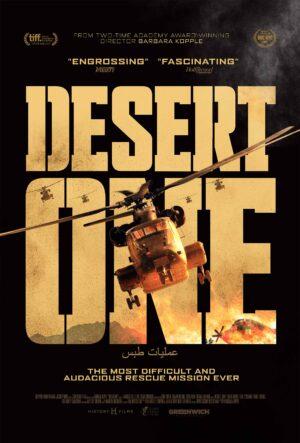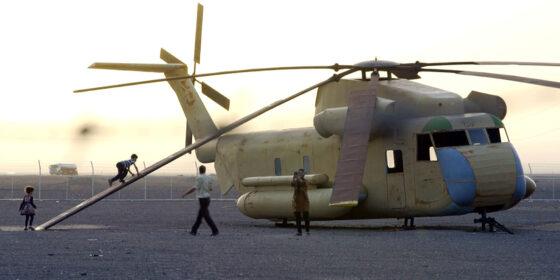
[Rating: Solid Rock Fist Up]

Available on VOD August 21
At the height of the Iranian Revolution in 1979, Americans working in the embassy in Tehran were taken hostage, leading to a situation that left all American citizens uneasy for over a year. President Jimmy Carter tried through peace talks to negotiate for the hostages’ freedom to no avail. Then, he ordered a rescue mission; a rescue mission that would end in tragedy before it even began. Academy Award-winning documentarian Barbara Kopple’s latest film, Desert One, explores what happened to that failed military operation to get the hostages out of Tehran in 1980. It is a story very unfamiliar to many, even 40 years later, and one that was so divisive to the nation, it was one factor in ending a presidency.
So what was Operation Eagle Claw? The mission of April 1980 was ordered by President Carter to fly to the U.S. Embassy in Tehran and essentially rescue the hostages. However, the mission failed before the operations even began. Eight helicopters were sent to Desert One from Egypt to Iran, at which point they would meet up with C-130s that would take all military personnel into Tehran. Only seven were able to make it, with one having issues with its propellers. The biggest issue at hand however, was an impending dust storm that made visibility impossible for yet another helicopter. And then when Iranian civilians showed up at Desert One, nothing went right and lives were lost. President Carter, who was interviewed for the film, expressed great sadness and remorse for what happened and personally took full responsibility since he ordered it. You can tell from seeing this nonagenarian talk how much he still thinks about what happens and still understands that maybe he could have done more to end the situation faster. A true President.

Kopple’s films have always dealt with some fascinating small moments in American history. She’s dealt with coal miners strikes, meatpacking strikes, and even the controversy surrounding the formerly named Dixie Chicks (now The Chicks). Now Desert One tells the story of a doomed operation to rescue Americans; a story that should be told. Just from my personal experience, the only thing I really know from the hostage situation is what I learned from Argo, which really isn’t much since that event is an isolated situation on its own. Kopple does the very best in getting first-hand accounts from the men who were there, witnessed the tragedy and have vivid memories that still affect them to this day. She even goes as far as interviewing many Iranians who held the Americans hostage and their own response to the failure of Desert One, and also the hostages and their responses. In the end, nobody is happy with the way anything went down. And why should they be when there seemed to be so many opportunities that lead to failure?
Desert One is yet another brilliant film telling a small slice of American history from Barbara Kopple. Her first-hand accounts of the events of the tragedy at Desert One help weave the story of the entire first year of the 1980s that would bring down a President and make the country even more at odds with the way of the world.






Comments on this entry are closed.